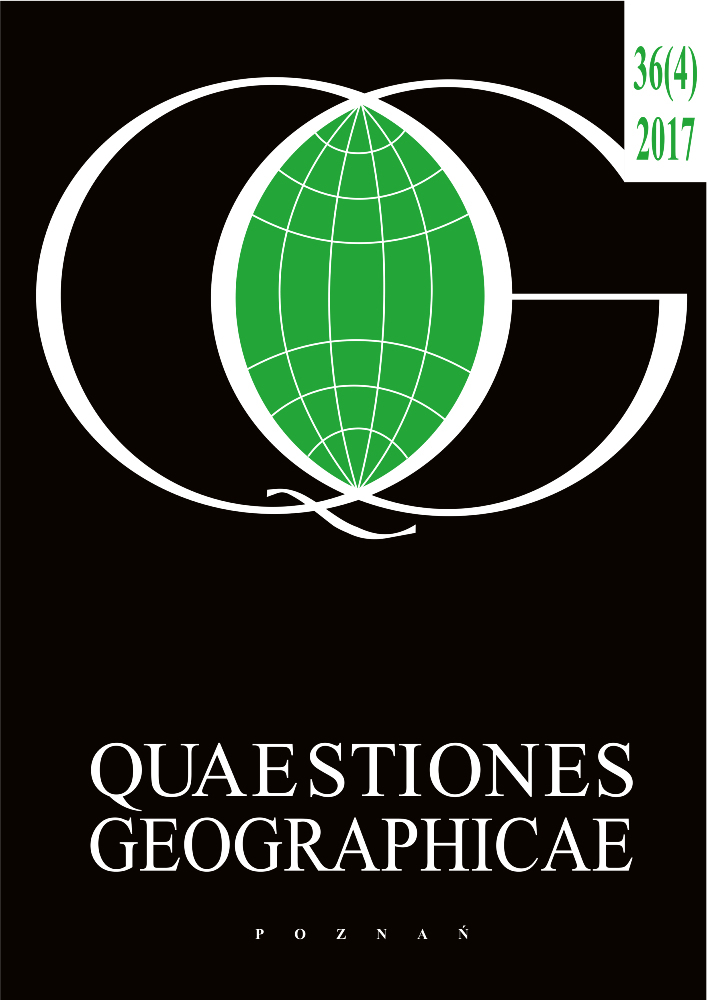Abstract
Human communities have always taken actions to create a healthier environment for living and working. Those efforts are best documented in the architectural structure everywhere, starting from ancient history to the present. It is assumed that the town of Ulcinj is one of the earliest cities on the Adriatic coast. The building morphology and urban structure of Ulcinj is 2,500 years old and is continued by multi-ethnical society. Hence, the urban structure of Ulcinj developed harmonically across the rock hills which encompass the city beach, forming the urban structure which is perceived as the unity of land and sea. The study investigates the Ulcinj urban structure, urban management, sustainable development, focusing on human comfort, and environmental actions with a view to accomplish better and more natural life. Bioclimatic passive design principles are associated with an environmental sustainable design, interrelated to the microclimate of the region, connected to the thermal, spatial, visual, acoustic, and air quality. The research method consists of empirical observation through the city and riviera. According to the conceptual findings of this paper, with a proper implementation of bioclimatic passive principles, the work seeks to indicate that it is possible to achieve a higher level than the current one. Hence, the huge number of tourists and overnight stays can make a difference in eco-tourism, and sustainable development if we can achieve energy efficiency, and preserve the natural resources in accordance with passive bioclimatic principles.References
ASHRAE 2010. ANSI/ASHRAE Standard 55-2010. Atlanta: American Society of Heating, Refrigerating and Air-Conditioning Engineers, Inc. https://sustainabilityworkshop.autodesk.com/buildings/human-thermal-comfort#1ASHRAE (accessed 3 January 2017).
Bajçinovci B., Jerliu F., 2016. Achieving energy efficiency in accordance with bioclimatic architecture principles. Environmental and climate technologies. doi: 10.1515/rtuect-2016-0013, vol. 18, pp. 54–63, Online: https://www.degruyter.com/view/j/rtuect.2016.18.issue-1/rtuect-2016-0013/rtuect-2016-0013.xml (accessed 3 April 2017).
Bajçinovci B., 2017. Ecological architecture in response over the centuries. A case study: Ulcinj of Adriatic Sea. Ecology, Environment and Conservation 23(2).
British Library 2017. Human geography. Help for researchers. http://www.bl.uk/reshelp/findhelpsubject/socsci/humangeog/humangeography.html (accessed 5 April 2017).
Buček J., 2016. Urban development policy challenges in east-central Europe: Governance, city regions and financialisation. Quaestiones Geographicae 35(2). Bogucki Wydawnictwo Naukowe, Poznań.
European Commission, UN, 2017. The 2030 Agenda for Sustainable Development. https://sustainabledevelopment.un.org/post2015/transformingourworld (accessed 20 March 2017).
Fanger P.O., 1982. Thermal comfort. Robert E. Krieger Publishing Comp., Malabar, FL.
IHMS 2016. Institute of Hydrometeorology and Seismology, Montenegro, Climatology. http://195.66.163.23/misc.php?text=27&sektor=1 (accessed 10 September 2012).
Krasniqi F., Selimaj R., Malsiu I., 2004. Instalimet Makinerike. Universiteti i Prishtinës, UP.
Krasniqi F., Selimaj R., 2014. Analysis of human thermal comfort in Kosovo conditions. Academy of Sciences and Arts of Kosovo. Faculty of Mechanical Engineering, UP.
MONSTAT (Statistical Office of Montenegro) 2017. Provider of official statistics in Montenegro’s statistical system. http://www.monstat.org/eng/index.php (accessed 25 March 2017).
OOuSI 2003. Österreichische Osthefte 45(1–2): 227. Österreichisches Ost-Südosteur.Institut.
Ptolemaei C., 1843. Geographia. Edidit Carolus Fridericus Augustus Nobbe. University of Michigan. https://catalog.hathitrust.org/Record/002504277 (accessed 5 May 2017).
Rymut K., 1981. Gegenstand und Methoden der Onomastik. Acta tricesimi conventus virorum doctorum omnium gentium onomasticae excolendae. Onomastics.
SME (Swedish Ministry of the Environment) 2004. A Swedish Strategy for Sustainable Development – Economic, Social and Environmental, Stockholm. http://www.government.se/49b73c/contentassets/3f67e0b1e47b4e83b542ed6892563d95/a-swedish-strategy-for-sustainable-development-summary (accessed 9 June 2017).
Szokolay S., 1997. Thermal comfort in the warm-humid tropics. http://anzasca.net/wp-content/uploads/2014/08/02_ANZASCA_1997_Sokolay.pdf (accessed 22 June 2017).
UNESCO 2016. United Nations Educational, Scientific and Cultural Organization (UNESCO). http://en.unesco.org/system/files/244834e1.pdf (accessed 21 June 2017).
Walker B., 1995. Hua Hu Ching: The unknown teachings of Lao Tzu. Harper Collins.
WEC (World Energy and Climate Policy) 2009. 2009 Assessment. World Energy Council. London, United Kingdom, 2009. London, UK. www.worldenergy.org (accessed 15 January 2017).
Yan H., Wang X., Hao P., Dong L., 2012. Study on the microclimatic characteristics and human comfort of park plant communities in summer. The 18th Biennial Conference of International Society for Ecological Modelling. Procedia Environmental Sciences 13: 755–765.
